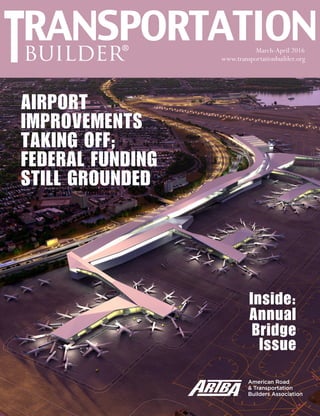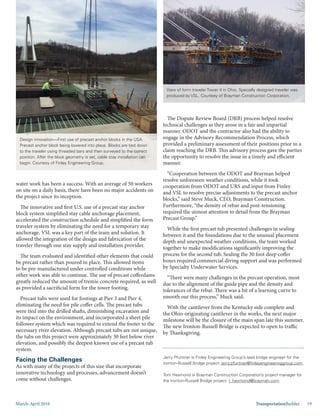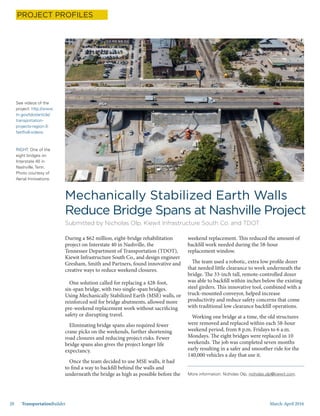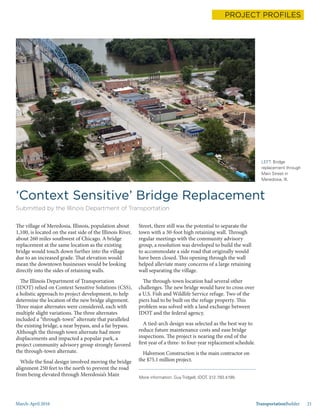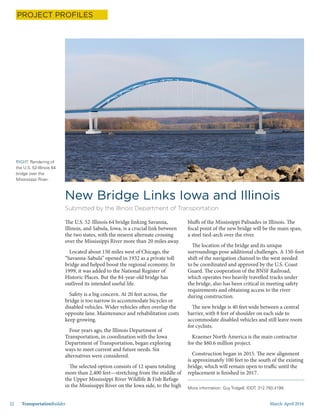This issue of Transportation Builder focuses on bridges and airports. It provides information on 10 bridge projects and 14 airport construction projects across the U.S., including both new construction and rehabilitation of bridges and major capital work like terminals and runways at airports. Some of the projects are complete while others are still under construction, and some airport work remains planned. The issue also introduces a new Q&A feature interviewing a woman leader in transportation and highlights innovations from ARTBA's Research and Education Division.
